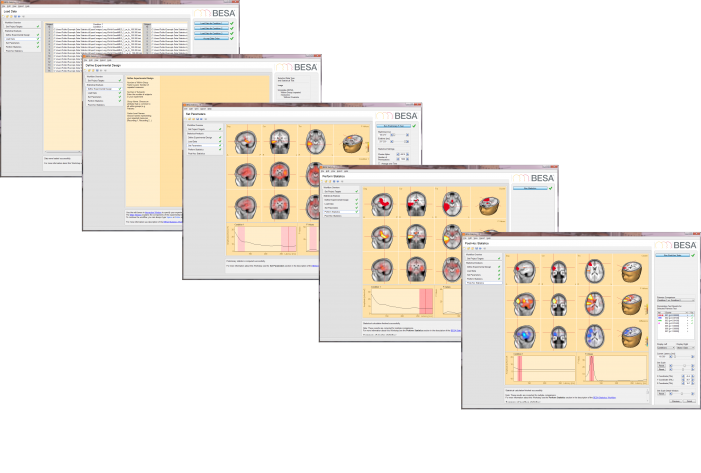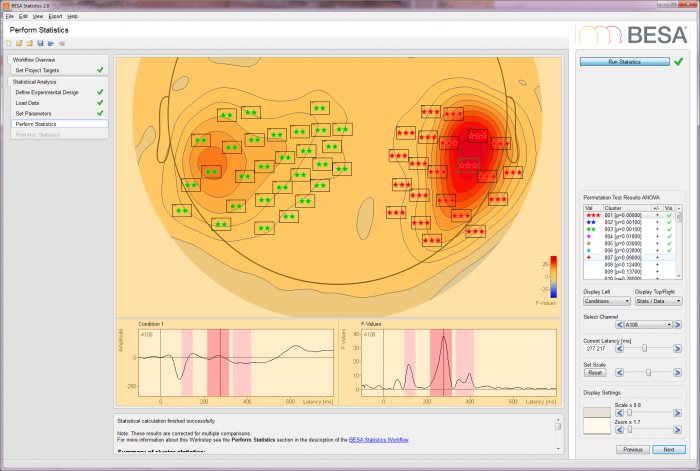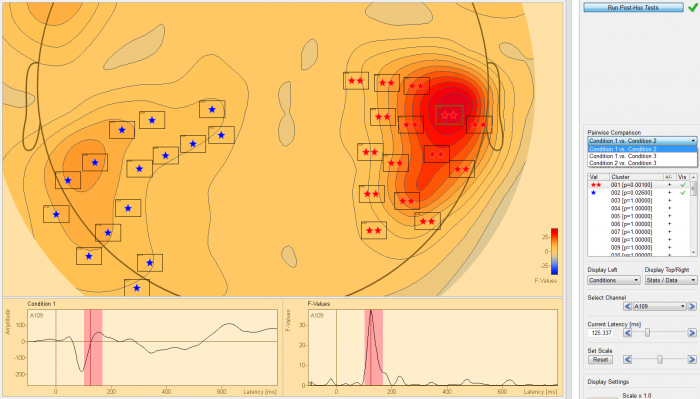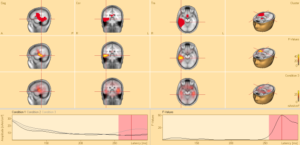BESA Statistics
Newly released: BESA Statistics 2.0
BESA Statistics 2.0 greatly enhances the capabilities of the previous version with two new analysis workflows for
- Single-factor Analysis of Variance (ANOVA) or Analysis of Covariance (ANCOVA) for comparing more than 2 groups / conditions, optionally accounting for the influence of a covariate of no interest
- Correlation analysis for testing the relationship between covariates of interest and EEG / MEG data
Further new features include
- Direct reading of the BrainVision Analyzer 2 data format for time and time-frequency data
- Topographic mapping of time-frequency data averages for t-Test and Correlation workflows
- Reading of the BESA generic binary file format for improved accuracy in ERP / ERF data analysis
- Use of OpenMP (parallel computing) resulting in massive improvement in calculation times, with full 64 bit support
As in BESA Statistics 1.0, it provides optimized, user-guided workflows for cross-subject analysis of EEG / MEG data. The statistical method used is parameter-free permutation testing on the basis of Student’s t-tests (Maris, E. and Oostenveld, R., 2007), F-tests (for ANOVA/ANCOVA), and correlations. The program is maximally user-friendly. All analyses are computed automatically with user-interaction minimized to defining time and / or frequency ranges of interest. Statistical values computed in BESA Statistics 2.0 can be directly used for scientific reports. No further analysis in other programs is needed. All results are visualized and can be directly used for publications.
BESA Statistics 2.0 integrates optimally with data that were analyzed in BESA Research, but it can also process data from other software packages as long as they conform to the BESA Statistics file format. The BrainVision Analyzer 2 native data format is supported for time and time-frequency data.
BESA Statistics will automatically identify clusters in time, and if applicable frequency and space where data of the input groups / conditions are not interchangeable, i.e. where the null-hypothesis that all groups / conditions are equal must be rejected. Results are considered corrected for multiple comparisons as only those clusters will be identified that have higher cluster values than 95% of all clusters derived by random permutation of data. Thus, results obtained by BESA Statistics are objective and robust.
For ANOVA/ANCOVA analysis, an additional non-parametric post-hoc Scheffe’s test is computed to determine, which pairwise comparison(s) were responsible for the group / condition main effect. A Bonferroni-Holm correction for multiple comparisons of the different pairwise combinations is applied subsequently.
System requirements
- Windows® 8.1 (Touch not supported)
- Windows® 7 – 32 bit and 64 bit versions
- Processor: minimum: 2 GHz
- RAM: minimum: 2 GB
- Display resolution: minimum: 1280×800 pixels
- Graphics card supporting OpenGL 1.1 with 16 MB RAM or more
Integrated workflow for all user-interactions
BESA Statistics uses a modern workflow concept that guides the user through all the worksteps needed to complete a project, suggests and explains necessary inputs and user actions, and performs many worksteps automatically. At any time, it is possible to interrupt and inspect earlier worksteps or redo them with modified input parameters if required.
The workflow menu gives an overview of all the worksteps to be done in a project and can be used to switch between worksteps. For example, you may redo an earlier step with different or advanced parameters.
ANOVA workflow for image data

Workstep Load Data: Optional data re-ordering

Workstep Perform Statistics: Parameter-free cluster permutation test

Workstep Post-Hoc Statistics: Pair-wise permutation Scheffe’s test

Request a Quotation |

